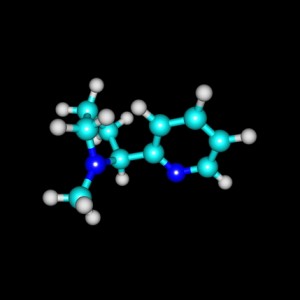Study on Immune Response in MS, Other Autoimmune Diseases Targets New Therapeutic Approach

 A study published by a team of investigators at the University of Tokyo’s Institute of Medical Science and Osaka University’s Graduate School of Engineering presented new evidence demonstrating how Toll-like receptor 9 (TLR9) binds to pathogenic DNA, turning on the functions of the innate immune system. This novel discovery is important for the design of new therapeutic drugs for autoimmune diseases, such as multiple sclerosis (MS), targeting TLR9. The study was published in the new issue of Nature.
A study published by a team of investigators at the University of Tokyo’s Institute of Medical Science and Osaka University’s Graduate School of Engineering presented new evidence demonstrating how Toll-like receptor 9 (TLR9) binds to pathogenic DNA, turning on the functions of the innate immune system. This novel discovery is important for the design of new therapeutic drugs for autoimmune diseases, such as multiple sclerosis (MS), targeting TLR9. The study was published in the new issue of Nature.
Toll-Like Receptors (TLRs) play a critical role in the early innate immune (non-specific first line of defense against pathogens) response to invading bacteria, viruses, and other foreign agents and are also involved in sensing the body’s internal alarm system to help activate other important components of its immune defenses. TLR9 detects the alarm system by recognizing a DNA sequence called Cytosine-phosphate-Guanine dinucleotide (CpG), a pattern that is specific to bacteria and viruses. This induces the release of interferon (IFN) and initiates the inflammatory response process. For autoimmune disease such as MS, studies have shown that TLRs and the release of IFN play a major role in the initiation of disease, triggering of relapses and regulation of damage.
Unfortunately, the exact structure of TLR9 and how it functions remained unknown, inhibiting advancement of treatments that specifically targeted these receptors. This study conducted by Professor Toshiyuki Shimizu PhD’s research group used crystallographic (molecular structure) data to evaluate TLR9’s ring-shaped form in three crucial states: as a free protein, bound to an inhibitor DNA, and bound to an agonist DNA. In the first two cases, TLR9 exists as a single ring, but when it binds to an agonist, like a DNA segment containing the CpG motif, two of its rings are bound together and form a dimer (chemical structure formed from two similar sub-units) that shares two DNA molecules.
[adrotate group=”4″]
In a statement explaining the importance of the study findings, Professor Shimizu said, “TLR9 is a promising drug target for treating viral infections, cancer, autoimmune diseases, and so on, so researchers have been trying to elucidate structurally how TLR9 recognizes pathogenic DNA ever since it was discovered more than a decade ago. This work represents a big step forward for drug development targeting TLR9, and also for our understanding of nucleic acid sensing by TLR9. TLRs have received significant attention due to their critical roles in the innate immune system, and our group has been focusing on the structural study of TLRs for many years. We believe that a precise understanding of TLR function should come from its visualization by structural analyses. Actually, we were quite surprised at the result of this study: the two DNA molecules, agonist and inhibitor, bound to completely different sites on TLR9, and the DNA molecules themselves had completely different structures, both of which we could never have predicted.”






